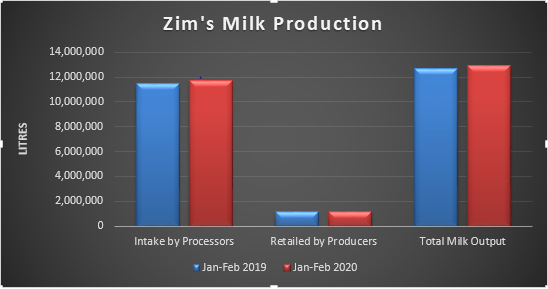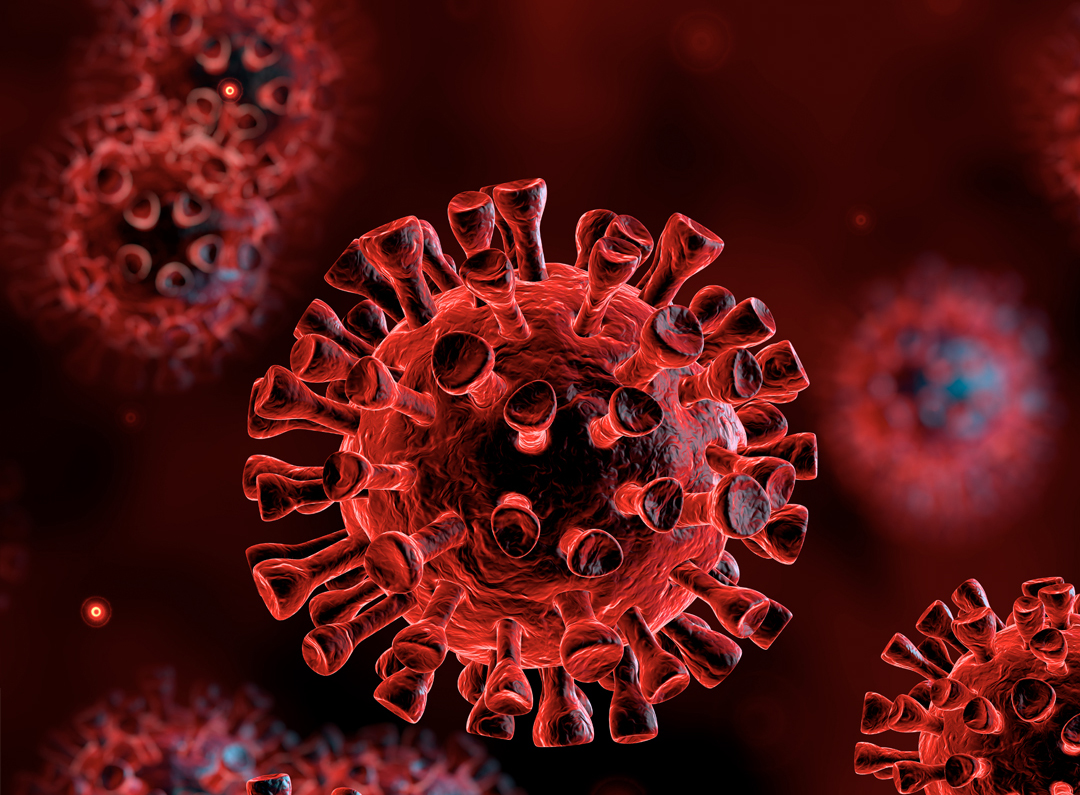Milk output up marginally
Share

Harare (New Ziana)-Zimbabwe’s raw milk production in the first 2 months of this year increased by a marginal 2 percentage points to 12.90 million liters from 12.66 million liters recorded in the same period last year, official data shows.
Latest figures from the Ministry of Agriculture dairy services department show that milk intake by processors rose 2 percent to 11.69 million liters from 11.46 million liters in the comparative period.
Retailed milk by producers increased marginally by 1 percent to 1.21 million liters from 1.20 million liters last year.
Zimbabwe Association of Dairy Farmers (ZADF) chairperson Kudzai Chirima attributed the rise in milk output to the “improved rains and grazing pastures” experienced last month.
“We are worried about this month’s output since the grass has started to wither,” he said.
In February, raw milk production went up marginally by 1.97 percent to 6.07 million liters compared to 5.95 million liters recorded in the comparable last year.
However, February output at 6.07 million liters, represents an 11 percent decline from January output of 6.83 million liters.
Challenges such as high cost of feed to subsidize the low hay stocks and unavailability of long-term funding have had a negative impact on the industry. Milk producers have also had their operations affected by water shortages due to erratic rainfall patterns and unavailability of stock feeds.
Zimbabwe’s milk output growth has been averaging 8.3 percent (68.94 million liters) in the last five years, with 2019 recording the highest output of 79.89 million liters despite the adverse effect of the El Nino induced drought, which had an impact on milk yields. But, the output missed the target of 100 million liters by 20.21 percent. Also, it was lower than the national consumption of 120 million liters.
Milk production levels plummeted dramatically from the early 1990s peak of 260 million liters. However, since the introduction of the Dairy Revitalization Programme in 2014 milk production has been steadily improving.
The European Union (EU) has been supporting the sector through an equipment and infrastructure initiative targeting dairy farmers under the Zimbabwe Agriculture Growth Programme. The EU is funding the programme to the tune of about €2.1 million.
The program has resulted in the distribution of 1 000 in-calf dairy heifers to farmers on a revolving basis while at least 4 000 farmers have been capacitated. Under the program, ZADF is expecting to receive 200 cows from South Africa starting next month.
New Ziana







